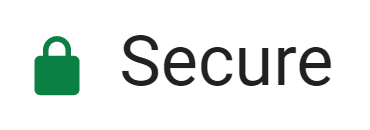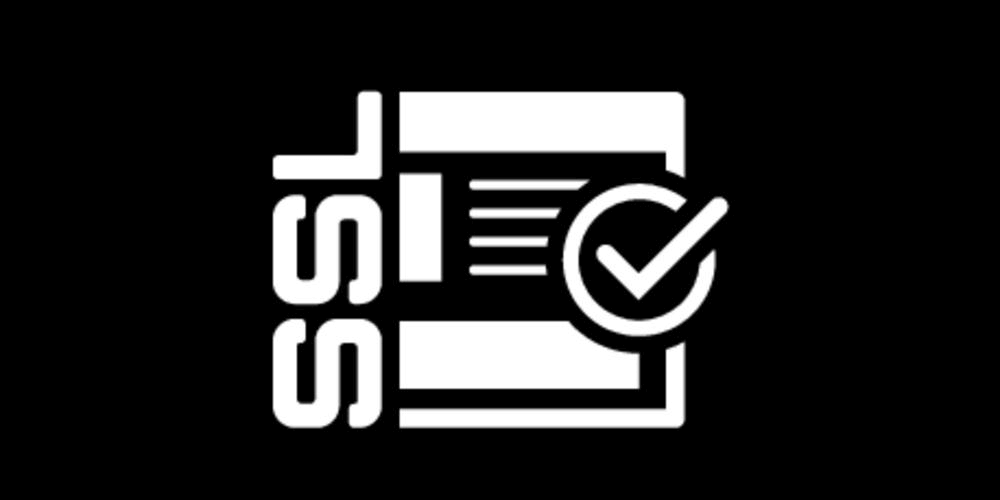Hyper Text Transfer Protocol Secure (HTTPS) encrypts data exchanged between a user’s browser and your website, as well as highlights the trustworthiness and reliability of your product to visitors.
As Google prioritizes HTTPS-enabled sites in search results, securing your WordPress website with an SSL certificate is now a necessity, not a choice.

What is HTTPS
Before jumping in, let’s clear up the two key components that bring it together: HTTP and SSL.
HTTP
HTTP stands for “Hyper Text Transfer Protocol”, or the data connections that send information between a browser and a website. These kinds of connections are not protected, however, and are vulnerable to data theft.
SSL
SSL stands for “Secure Sockets Layer”, or the cryptographic system that encrypts data and secures connections between browsers and websites. To enable an SSL system on a website, an SSL certificate needs to be acquired first.
HTTPS
When HTTP connections are protected with SSL, they become HTTPS data connections or “Hyper Text Transfer Protocol Secure”. The result is a protected connection that defends the privacy of exchanged data, while also acting as authentication for websites.
When a user visits any website with a protected HTTPS connection, they’ll be able to find a green padlock icon that indicates there’s a secure website address. This visible proof makes HTTPS connections especially critical for e-commerce websites that want to ensure the confidence of their customers.
See for Yourself: When you visit this page, check your browser, and you’ll notice the “Secure” icon displayed next to the URL in the upper left corner.

You can very easily install an SSL certificate on your website with our force SSL WordPress plugin. It will save you a lot of time and effort while boosting your website’s protection.
May 2025 Offer – For a Limited Time Only:
Get WordPress HTTPS SSL Plugin for 15% off! Don’t miss out!
Protecting User Information With HTTPS
Every user expects that the website they visit protects their information from being illegally accessed which underscores the critical importance of HTTPS connections.
With businesses and consumers depending heavily on the internet, websites must recognize the need to protect themselves from online threats. HTTPS is not just a best practice; it’s an essential requirement in today’s digital world.
HTTPS for WordPress Websites

WordPress is an excellent platform for creating websites of all types and we love it!
However, many WordPress websites are not initially equipped with HTTPS connections. To guarantee the security of your WordPress website, some essential steps need to be followed.
HTTPS is a vital component for any WordPress website, providing essential security features to safeguard user data and build trust with visitors.
By encrypting the connection between a user’s browser and the website server, HTTPS prevents unauthorized access to sensitive information exchanged during browsing sessions.
Not only does HTTPS enhance website security, but it also improves search engine rankings, as major search engines prioritize secure websites.
Implementing HTTPS redirection on a WordPress site involves obtaining and configuring an SSL certificate, a relatively simple process that yields significant benefits in terms of both security and credibility.
Why HTTPS is Important for Website Security

We already mentioned data security is important, though we’ll let some of the numbers speak for themselves here.
• Over 80% of attacks on websites originate from insecure or stolen passwords.
• Roughly 90,000 attacks occur on WordPress websites every minute.
• More than 50% of online organizations report more attack attempts than previous years
In the absence of an HTTPS connection, websites are vulnerable to malicious attacks from hackers, phishing schemes, and various other threats. This leaves your users’ confidential information, including passwords, credit card details, and social security numbers, unprotected and susceptible to exploitation.
This is something that no active website wants, and no online business can afford to risk. Especially when the global average cost of a data breach is USD 3.86 million, a number that’s rising year by year.
Websites Without SSL Certificates are More Vulnerable
Websites that lack SSL certificates are particularly vulnerable to various cyber threats and attacks. Without SSL encryption, data transmitted between the user’s browser and the website’s server is sent in plain text, making it susceptible to interception by malicious actors.
One common attack on non-SSL websites is known as a man-in-the-middle (MITM) attack, where hackers intercept the communication between the user and the server, potentially stealing sensitive information such as login credentials, payment details, or personal data.
What is more, without SSL, websites are more prone to spoofing attacks, where hackers can impersonate the site, leading users to unknowingly provide their information to fraudulent sources.
Search engines like Google have started flagging websites without SSL as “not secure,” which can lead to a loss of trust from visitors and a decrease in search engine rankings, adversely impacting the site’s visibility and reputation.
All of these issues make implementing SSL protocols essential for safeguarding both the website and its users from various cyber threats.
3 Steps to Install an SSL Certificate

1. Purchase an SSL Certificate
Some WordPress hosting services that will include SSL as part of their subscription. If yours doesn’t include one, SSL certificates are also available for purchase from third-party vendors.
A quick Google search will provide many choices. For example, some SSL certificates only protect one browser while others are available to defend multiple sites.
Each certificate option comes with their own price ranges to browse between, so spend some time researching to find what provider would be best for your website.
2. Backup your Website to be Safe
Before making any large changes to the backend of your website, it’s a good idea to make a backup just in case.
This way, in the unfortunate case that something doesn’t go right, you’ll be able to safely restore your website to its previous unaffected state.
3. Install your SSL Certificate (via Host or Plugin)
Some web hosting providers will offer to install a purchased SSL certificate on your website. If that option is not available, it is also possible to manually install a SSL certificate, though that requires more hands-on knowledge and isn’t recommended for the inexperienced.
Thankfully, there are also plenty of WordPress plugins available that enable your SSL certificate for you. This is one of the more common methods of enabling HTTPS, and there are plenty of plugins that do it.
All this can be also done in our force HTTPS plugin provides comprehensive control over HTTPS redirection and management within WordPress websites. With features such as manual HTTPS redirection mapping, users can seamlessly transition from HTTP to HTTPS versions of URLs.
Moreover, the plugin offers the flexibility to enable HTTPS mode selectively on specific pages, posts, or custom posts, ensuring encryption only where needed. It also facilitates the automatic redirection of all or designated pages to HTTPS URLs, enhancing site security.
Additionally, the plugin supports WordPress Multisite environments and includes tools to detect and fix insecure HTTPS usage within the code, ensuring comprehensive SSL certificate integration.
With options to enforce HTTPS encryption on both the backend and frontend, the Force HTTPS plugin offers robust protection and flexibility for website owners.
Conclusion
By updating URLs, you’re instructing WordPress to serve your website content over HTTPS, ensuring that visitors access your site securely.
After completing all of these steps, your WordPress site is now equipped with HTTPS, providing a secure connection for your visitors, as well as boosting your website’s credibility and trustworthiness.
Remember to periodically renew your SSL certificate to maintain uninterrupted security for your website. With these three simple steps, you’ve taken a significant stride toward fortifying your online presence against potential security threats.


